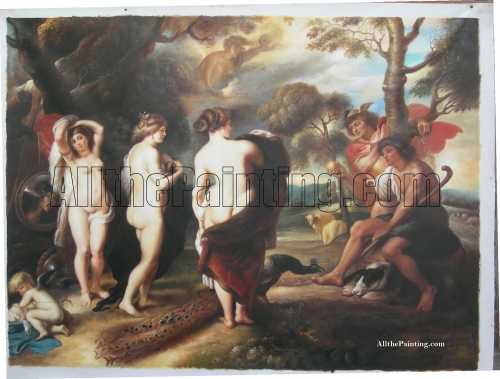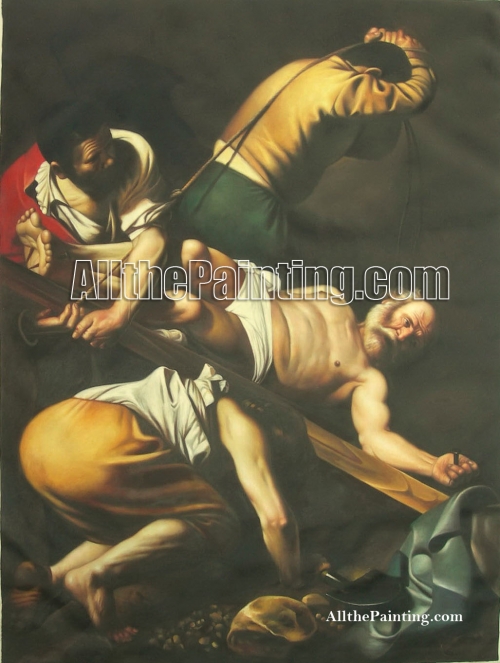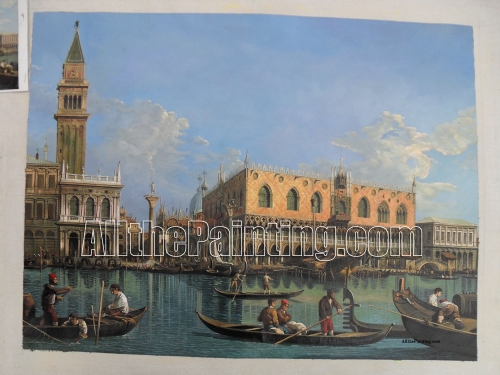We are discussing the art features and the development of the classical paintings. If we want to understand the classical painting reproduction exactly, we need to know more about classical painting in advance.
The common features of the classical oil painting: regardless the size, the oil painting could show us a perfect artistic conception. The oil painting artist could arrange the articles in a limited painting composition with a well ordered and attractive eye sight. The oil paintings normally have a outstanding subject with fine details. The shape and color is elegant and formed the artistic atmosphere. Appreciating classical oil painting is pleasant thing. When expressing the personal feeling, the oil painting artists need to consider about the objective world and depicting scenes with a strict sketch, lively and decorative painting color, and natural lines with a balance painting structure. In the classical oil painting, the artists pay attention to the perspective skill, human anatomy for realizing well combination of the art feeling, life enthusiasm and the scientific principles in a oil painting.
In the early stage of the oil paintings art, the history background laid the art foundation of the realistic painting skill. In the 15th century, during the Renaissance, the humanism artists tried to emancipate from the religion subjects. They began to observe the figures, landscape and still life in life and then created the figure paintings, landscape paintings and still life paintings. Then the religion paintings also included the common custom elements. Some artists painted the real life completely. Oil painting artists in Renaissance times inherited the ancient Greece and ancient Roma art conscious. They stressed to depicted an event and release the reasons, that’s why their oil paintings were normally finished with artistic technique, typical plots and classical images.
Meanwhile the artists studied the anatomy, perspective and used them in their oil paintings. The use of anatomy made the figures in the classical oil painting had accurate proportion, shape, structure like a real person. The perspective skill established the deep space of the oil painting art. From then on the oil paintings were more scientific and showed a three-dimensional effect. The scene in the oil painting was more similar with the instance view in life. And the light and dark skill made the art elements displayed in the light source in oil painting and formed the clear levels. The oil painting pigments and the painting tools’ advantages realized the humanism art subjects and the realistic art conscious. Oil painting showed high level realistic and classic quality.
A classical oil painting is always the comprehensive use of the art language. In different country and times, the artists normally pay one or more art elements and formed different art style. In Renaissance the Italian artists stressed the light and dark skill when painting. In the oil painting the dark park the scene was finished in the shade. The boundary line of the paintings was gentle. Articles in the oil painting unified as whole. Leonardo da Vinci (Madonna in der Felsengrotte) was a representative oil painting of this painting style. In the same time, the Netherlands artists stressed the fine details of the scene. The painting color difference showed the connection of the articles instead of the transition between dark and light. The Italian artist Titian is the first one to pay attention to the painting color. He processed the painting canvas with dark color then painted on it. Titian used the transparent pigments with the vivid brush touches. The painting color was well combined with the shape. His oil paintings always show an outstanding texture.
In the 17th century, the Europe classical oil painting developed very fast. Different regions, nations and artists explored oil paintings from different angles based on their social background and national temperament. The oil painting subjects could be divided into historical oil paintings, religion oil paintings, group portrait paintings, personal portrait, landscape paintings, still life paintings, genre paintings, etc. The oil painting skills were also well developed and formed different art schools in different countries.
Oil painting in the 17th century, stressed the use of light. By the contrast between cold and warm, bright and dark, heavy and thin of the painting colors, the painting artists created the oil painting art by light and realized the art atmosphere. The Italy artist Caravaggio broke the harmonious light effect. He laid importance on the contrast of bright and shade and used the dark background to set off the figures in his oil paintings, the light in Caravaggio’s oil paintings were normally looked bright. The Spain painting artist El Greco painted the landscape in the dim light and shade. He depicted the shapes by the spread of the bright and dark. The painting color tone changed continuously. The painting touches were heavy; the colors infiltrated each other in the painting process, which leads the amazing painting effect. The Holland artist Rembrandt also take the light as an important painting method for showing the figure’s inner spirit. In his portrait paintings, most of them were painted in the dark background, only the figure’s facial expression, hands were in bright light. He used the dark painting color on the shade part of the painting, that made the dark part looked deep and heavy. On the light part, Rembrandt used the thick painting color and achieved the volume feeling in his oil paintings.
In the same times, the brush touches were also developed by many painting artists. The brush touches are the moving trace of the oil painting brushes with pigments on the painting canvas. In the early stages, the oil painting pigments were used flat on the canvas without showing the brush touches. In the 17th century, the artists noticed that the painting touches were always affected by the feeling and mood condition. When painting the artists could generate the feelings to control the painting touches. The moving of the brush touches made the figures vivid and showed great art effect. Flanders artist Rubens used full bright painting colors with big painting touches. His brush touches followed the shapes of the figures and painting skills were used freely and naturally. Rubens oil paintings were famous of the nimble, unrestrained painting brushes and shapes in curve. His paintings were always in a strong moving mood when depicting the theatrical conflicts.
The Holland artist f. Frans Hals used the quick and flexible brush touches to paint the portrait. His portrait paintings were lively. Hals painting styles was closely connected with his bold and optimistic personality. Another Holland artist, Johannes Vermeer was good at small and smooth painting touches to depict the figures inside the rooms. His painting style was peaceful and warm.
From the 18th century, the oil painting art changed greatly based on the social, culture, and science reasons. More art school emerged, more painting art were created and more deep influence were generated in different fields. The classical oil painting was the results of all elements in the big environment. The Italy artists in Renaissance laid importance to the light and shade skill. The dark part of the oil painting was painted in shade, the line between light and dark was not very clear, and changed gently. The oil paintings showed a successful combination of the painting composition.
In current ages, the oil painting artists use the multi-layers color painting process. The dark part of the painting is painted by thin color many times. The finished painting show a rich color, texture and tone.
Here you can see some classical painting reproduction from our painting gallery:




